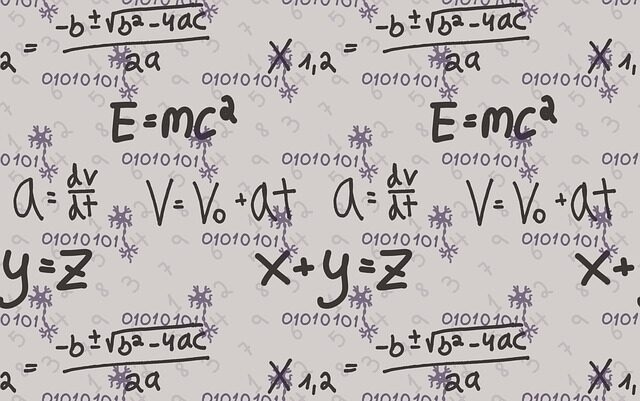Objective information refers to factual data that can be measured or observed without personal biases or interpretations. Subjective information, on the other hand, is based on personal opinions, interpretations, or feelings that may vary from person to person.
Definition of Objective information

Objective information is factual data that can be measured, observed, or verified without personal biases, interpretations, or emotions. This type of information is often based on empirical evidence, such as scientific studies, statistics, or measurements, and is considered to be independent of individual opinions or beliefs. Objective information can be tested and validated through repeated experiments or observations, and is generally accepted as accurate and reliable. Examples of objective information include the boiling point of water, the weight of an object, or the distance between two points.
Definition of Subjective Information
(Photo by Shiromani Kant on Unsplash )

Subjective information refers to data that is based on personal opinions, interpretations, or feelings that may vary from person to person. This type of information is often influenced by individual biases, values, and experiences, and may not be easily quantifiable or verifiable. Subjective information is often communicated through language, such as descriptions, stories, or anecdotes, and can be shaped by factors such as tone, context, and audience. Examples of subjective information include personal opinions, feelings, emotions, and beliefs, as well as artistic works, such as paintings, music, and literature. Because subjective information is influenced by personal perspectives, it is often open to interpretation and can be subject to debate or disagreement.
Objective information Vs. Subjective information – Key differences
The key differences between objective and subjective information are as follows:
Basis: Objective information is based on empirical evidence and can be measured or observed without personal biases or interpretations, while subjective information is based on personal opinions, interpretations, or feelings that may vary from person to person.
Verifiability: Objective information can be tested and validated through repeated experiments or observations, while subjective information may not be easily quantifiable or verifiable.
Independence: Objective information is considered to be independent of individual opinions or beliefs, while subjective information is often influenced by personal biases, values, and experiences.
Language: Objective information is often communicated through scientific or technical language, while subjective information is often communicated through descriptive language, such as stories or anecdotes.
Interpretation: Objective information is generally accepted as accurate and reliable, while subjective information is open to interpretation and can be subject to debate or disagreement.
Objective information is more reliable and less prone to individual biases, while subjective information is more personal and can provide a deeper understanding of individual experiences and perspectives.
Examples of Objective information
Here are some examples of objective information:
- The melting point of ice is 0 degrees Celsius.
- The boiling point of water at standard pressure is 100 degrees Celsius.
- The Earth orbits the Sun once every 365.25 days.
- The speed of light in a vacuum is approximately 299,792,458 meters per second.
- The distance between the Earth and the Moon is approximately 238,855 miles.
- The mass of an electron is approximately 9.11 x 10^-31 kilograms.
- The chemical formula for water is H2O.
- The human body has 206 bones.
- The density of gold is approximately 19.3 grams per cubic centimeter.
- The atmospheric pressure at sea level is approximately 101.3 kilopascals.
Examples of Subjective Information
Here are some examples of subjective information:
- Personal opinions, such as “I believe that chocolate ice cream is better than vanilla ice cream.”
- Feelings and emotions, such as “I feel happy when I spend time with my family.”
- Preferences, such as “I prefer listening to classical music over hip hop.”
- Aesthetic judgments, such as “I think that this painting is beautiful.”
- Interpretations of events, such as “I think that the movie had a sad ending.”
- Memories, such as “I remember my grandmother’s house being cozy and warm.”
- Cultural practices, such as “In my culture, it is customary to celebrate birthdays with a big party.”
- Moral or ethical beliefs, such as “I believe that lying is wrong.”
- Biographical information, such as “I was born in a small town in the midwest.”
- Religious or spiritual experiences, such as “I feel a deep sense of peace when I meditate.”
How to Use Objective information?
Objective information is typically used to support or provide evidence for arguments, decisions, or actions. Here are some ways to use objective information effectively:
Research: Objective information can be used to conduct research on a specific topic, such as a scientific study or statistical analysis. This can help provide a more accurate and reliable understanding of the subject matter.
Analysis: Objective information can be used to analyze and evaluate a situation or problem, such as a financial report or market trend analysis. This can help identify potential opportunities or risks, and inform decision-making.
Communication: Objective information can be used to communicate complex or technical information to others, such as in a presentation or report. This can help ensure that information is clear, accurate, and understandable to a wider audience.
Planning: Objective information can be used to inform planning and forecasting, such as in project management or strategic planning. This can help ensure that plans are based on accurate and reliable information, and are more likely to be successful.
Problem-solving: Objective information can be used to solve problems or address issues, such as in a troubleshooting scenario or quality control process. This can help identify the root cause of a problem and develop effective solutions.
Using objective information can help ensure that decisions and actions are based on accurate and reliable data, and are more likely to be successful in achieving their intended goals.
How to Use Subjective Information?
Subjective information can be used to provide personal perspectives, opinions, and experiences. Here are some ways to use subjective information effectively:
Empathy: Subjective information can be used to develop empathy and understanding towards others. For example, listening to someone’s personal experiences can help us understand their feelings and perspectives better.
Creativity: Subjective information can be used to inspire creativity and imagination. For example, personal experiences and emotions can inspire artists, writers, and musicians to create works of art that resonate with others.
Decision-making: Subjective information can be used to inform personal decision-making. For example, personal values and beliefs can help guide ethical or moral decisions.
Communication: Subjective information can be used to communicate personal experiences and emotions to others. For example, storytelling or personal anecdotes can help engage and connect with others on a deeper level.
Self-reflection: Subjective information can be used for self-reflection and personal growth. For example, reflecting on personal experiences and emotions can help identify areas of strength and weakness, and develop strategies for self-improvement.
Using subjective information can provide a more personal and meaningful perspective on a particular subject, and can help build connections and empathy with others. However, it is important to recognize that subjective information may be influenced by personal biases and experiences, and may not always be reliable or accurate in certain contexts.
Featured Image By – OpenClipart-Vectors from Pixabay








